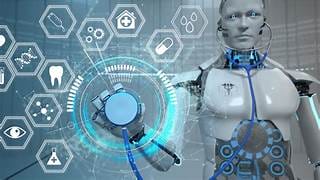Strategic Workforce Planning: Navigating the Future of Work
March 22, 2024 2024-04-04 9:38
Strategic Workforce Planning: Navigating the Future of Work
In an era marked by rapid technological advancements, shifting demographics, and evolving business models, strategic workforce planning has become more crucial than ever. It is a forward-looking approach that helps organizations align their human resource management with their long-term business objectives, ensuring they have the right people, with the right skills, in the right places, at the right times. This article delves into the essence of strategic workforce planning and its pivotal role in navigating the complexities of the future of work.
Understanding Strategic Workforce Planning
Strategic workforce planning is the process of analyzing current workforce capabilities, determining future workforce requirements, and implementing strategies to meet those needs. It encompasses identifying skills gaps, forecasting labor demands, planning for succession, and developing talent acquisition and retention strategies. This proactive approach not only addresses immediate staffing needs but also anticipates future challenges and opportunities, enabling organizations to stay competitive in a rapidly changing world.
Key Components of Effective Workforce Planning
- Workforce Analysis: Assessing the current workforce’s composition, skills, and capabilities to identify strengths, weaknesses, and areas for development.
- Future Workforce Forecasting: Predicting future workforce needs based on business growth, technological trends, and market dynamics.
- Gap Analysis: Identifying the differences between the current workforce and future needs, focusing on skills, roles, and numbers.
- Strategy Development: Crafting tailored strategies to bridge identified gaps, which may include training and development programs, recruitment plans, and workforce restructuring.
- Implementation and Monitoring: Executing the planned strategies and continuously monitoring their effectiveness, making adjustments as necessary.
The Role of Technology in Strategic Workforce Planning
Technological tools and data analytics play a critical role in enhancing the accuracy and efficiency of workforce planning. HR analytics, artificial intelligence, and machine learning can provide deep insights into workforce dynamics, predict future trends, and inform strategic decisions. Technology also facilitates the integration of workforce planning with other HR systems, ensuring a holistic approach to talent management.
Challenges and Considerations
While strategic workforce planning offers numerous benefits, it also presents challenges, including data accuracy, changing business strategies, and aligning workforce planning with overall organizational goals. Successful workforce planning requires a collaborative effort across departments, clear communication, and flexibility to adapt to changing circumstances.
The Future of Strategic Workforce Planning
As we look ahead, strategic workforce planning will continue to evolve, influenced by global trends such as remote work, gig economy, and the need for lifelong learning. Organizations that embrace adaptive workforce strategies and invest in continuous learning and development will be better positioned to navigate the future successfully.
Conclusion
Strategic workforce planning is a vital tool for organizations aiming to thrive in the future of work. By proactively aligning their workforce strategies with business objectives, organizations can ensure they have a skilled, agile, and adaptable workforce ready to meet the challenges and seize the opportunities of tomorrow.
Related Posts
Strategic Workforce Planning: Navigating the Future of Work
March 22, 2024 2024-04-04 9:38Popular Tags





























